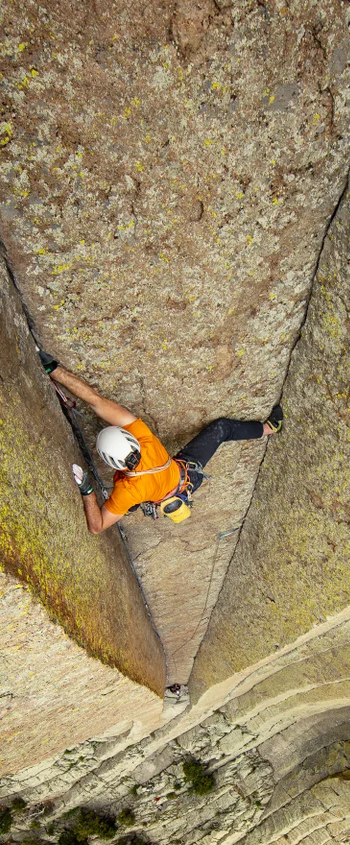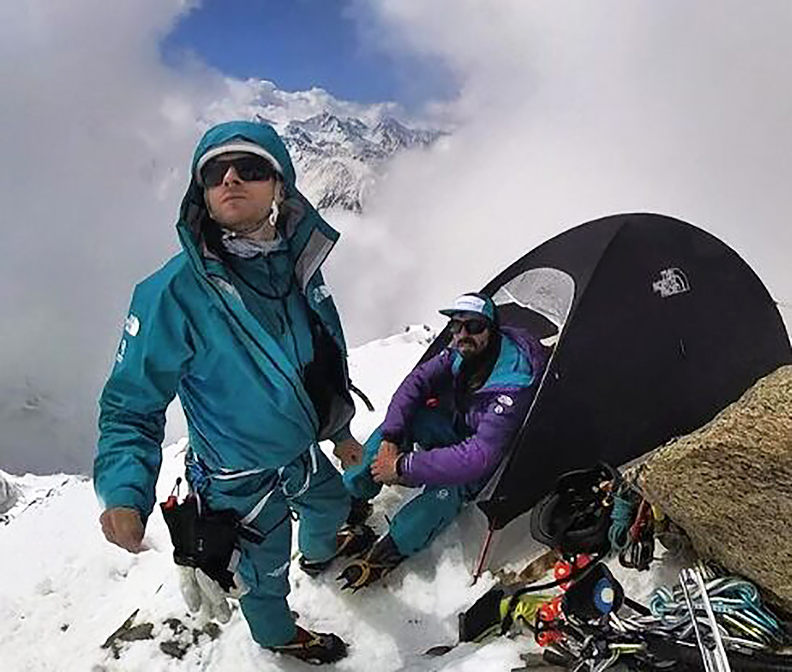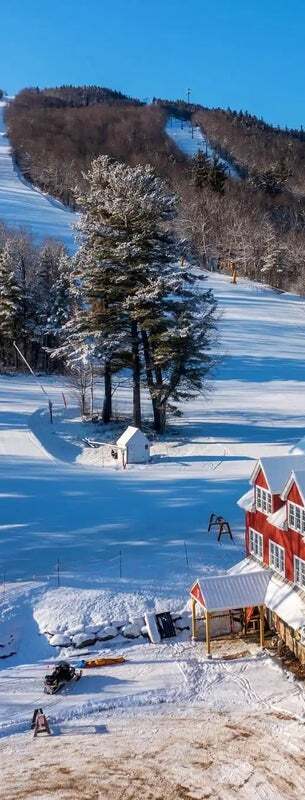From summit to sea: a snowboarding adventure in the Arctic Circle
There are no lifts in Norway’s picturesque Lyngen Alps, so if you want to ride down a mountain to the shore you have to hike up it first
I’m on top of the world, in all senses of the term: we’re 500 miles inside the Arctic Circle in Norway’s Lyngen Alps and I’m buzzing at having reached the summit of Riššavárri, after a 31/2-hour hike.
Jagged white peaks rise starkly from snaking, deep blue fjords, the sun is shining, the light’s amazing – and there’s no one here but me and my guide, Mikal Nerberg. With more than 60 summits over 1,000 metres, the Lyngen Alps have a quasi-mythical status among hardcore skiers. It’s a purely touring destination: there are no ski lifts, so any mountain you want to ride down you have to hike up, using “skins” on your skis for grip. With ski fans increasingly wanting a fitness break, rather than just boozy lunches and downhill meanders, touring is a growth area.
The Lyngen Alps is where alpine guides come on holiday once their European season finishes, and where they bring their best and favourite guests. I’m here in early April but the season runs until June, when there’s skiing in the midnight sun.
Instead of getting a resort bus or cable car to our starting point, we take a ferry across the fjord from Lyngseidet to Olderdalen. Our hike begins at sea level, rising up through a forest of elder and silver birch, the trees bowed under the weight of the snow. Mikal is on touring skis, while I’m on a splitboard – a snowboard that splits in two so it can be used like touring skis. The way isn’t too steep, but Mikal insists on a slow pace and makes us stop for snacks every hour to keep energy levels up.

Coming out of the woods we see our target summit, high in the sky, and still another 1,000 metres away. The climb quickly gets steeper but at the hour-two stop I still feel OK. As we reach hour three, however, I begin to wonder if I’ll ever make it to the top.
I put my board together, while Mikal checks the snow to see which line would be our best descent. We set off, navigate some juddering wind-ruined snow then find a pocket of lovely soft pillow-like powder. Further down we ride super-fast spring slush, passing giant boulders of icy snow, and then cut into the forest we climbed through earlier, dodging the tightly packed tree trunks and stumps as if in a computer game. We emerge into a snowfield and ride down to the fjord, a complete run from summit to sea.
Most skiers and snowboarders stay at the Magic Mountain Lodge (bunks from £40pp full-board) in Lyngseidet – the main, albeit tiny town – but it’s fully booked, so I stay in a private rental house in a hamlet 12 miles north (Take Me Away, Holiday House, from £110 a night, sleeps four). Like almost every house in Lyngen it looks straight out of the Cabin Porn book: white wood with a pretty green trim and a 1960s-style kitsch interior. On my first night a white hare dances in the drive.
On day two we drive north to the waterside hamlet of Koppangen, where the road stops abruptly and turns into mountain. From here we set off for the 950-metre summit of Goalborri. Yesterday’s blue skies have switched to snowy showers. Before long it’s too steep and slippery to proceed by splitboard so I strap it to my backpack, put crampons over my boots, and Mikal hands me an ice axe for stability.

This feels more aerobically tough than the day before – like climbing a snowy ladder, with the odd rock to scramble over – but we cover a lot more ground. After 21/2 hours we reach the top. Tiredness only hits as we start to ride the steep but reassuringly wide couloir. Lower down, we put down fresh tracks in soft spring snow, before popping out at the fjord.
Later that night I see the wisps of the northern lights rise in the sky. It’s beautiful but doesn’t come close to being the highlight of my trip, nor does the snowboarding down, fun as that was. The bit I love best has been the hiking up, the hard work of earning those runs down in this wild, silent and most un-ski resort-like place. Which also happens to be as easily reachable from the UK as the European Alps.
Extreme adventure at the edge of the word: sail and ski in Norway
There are few more thrilling places to ski tour than the Lyngen Alps, a 55-mile chain of peaks that punctuates Norway’s fragmented northerly fringes.
“Sometimes you have to do things you’ve never done to get to places you’ve never been.” These are the words of wisdom offered by our mountain guide, Espen Minde, as we take a break from climbing 1,000 metres on skis up an unnamed peak in Norway’s Lyngen Alps. Something, indeed, I’d never done before. We’re also climbing straight into a blizzard. Normally, in conditions like these, I’d have turned back or maybe not even set off in the first place. But Espen, being a Norwegian mountain guide, isn’t put off by driving snow, howling winds and zero visibility. And as our group — comprising six other skiers — has every confidence in Espen’s years of experience touring these wild, often unnamed mountains, we plough on.
Ski touring in the Lyngen Alps isn’t always like this, of course. Aboard the Arctic Eagle catamaran, the comfy floating accommodation for our ski and sail trip around Norway’s northeastern shores, we’ve seen all weathers. On the first day, having sailed for three hours from its base in Tromsø, Arctic Eagle anchored off the coast of Vanna island, afternoon sunlight glinting on the waters of the fjord as our captain, Håkon, ferried us to the rocky shoreline.
Once on dry land, we start our 1,031-metre ascent of Mount Vanntinden. The snowbound peaks of the Lyngen Alps bear down on us from all quarters, rising majestically up into a baby-blue sky. There’s not a soul to be seen and not a sound to be heard other than the gentle lapping of sea against shore.

Espen leads us at a gentle pace, with breaks to take in the view. It’s late April and we’re well north of the Arctic Circle so we have plenty of daylight. The views as we ascend become more spellbinding, the slowly sinking sun casting an increasingly golden glow across mountains and sea. By the time we reach the summit, the sun is just above the horizon and we’re on top of the world in every sense. It’s high fives all round, a fast round of photos, then we need to get moving to get back to the boat before dark.
We remove the climbing skins from the base of our skis (the sheathes that allow you to ascend without constantly slipping backwards), flip our ski touring bindings to ‘descend’ mode, don a couple of warm layers, tighten up rucksack straps, clip into our skis again and set off downhill.

We’re able to spread out and enjoy big, swooping turns across huge snowfields almost all the way back down to the fjord, skiing into the setting sun, a glorious landscape of deserted mountains and dark-blue sea spread before us. Whoops and hollers of excitement are inevitable and why not? There’s no one else around.
Back aboard Arctic Eagle, everyone is ready for a beer, but not before one unavoidable Arctic ritual: a quick dip in the icy Norwegian Sea. With the water temperature at around 5C, no one stays in for long. Warm and buzzing after a hot shower, we gather in the catamaran’s galley around the large table to enjoy freshly caught cod and cold beers, before Captain Håkon, who’s sailing us east to anchor off the coast of Arnøya island for the night, shouts: “Quick! Come up on deck!”
The Northern Lights are doing their thing in the starlit skies above. A relatively muted display of pale-green swirling waves passing over us, but it’s a winning finale to the perfect day. Not every day is so blessed, of course. This is Arctic Norway and the only predictable thing about the weather is its unpredictability, but over the course of the trip we get to ski amid the most incredible scenery, in everything from sunshine to mist, sleet and snow. Eventually, six days after setting sail from Tromsø, Arctic Eagle returns us to its home port. Exhausted, sunburnt, weather battered and happy, we step ashore and say a sad farewell to Captain Håkon and Espen, safe in the knowledge that it’s absolutely worth doing things you’ve never done to get to places you’ve never been.
By Alf Anderson, National Geographic
For more information and details : https://www.nationalgeographic.com/travel/article/extreme-adventure-sail-ski-in-norway




